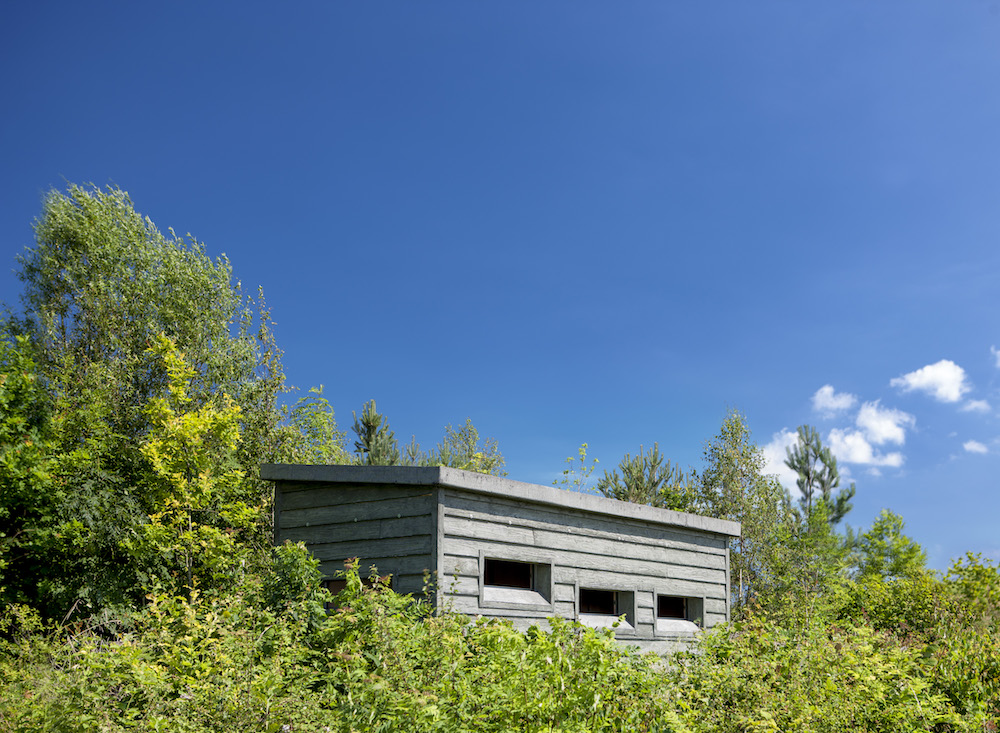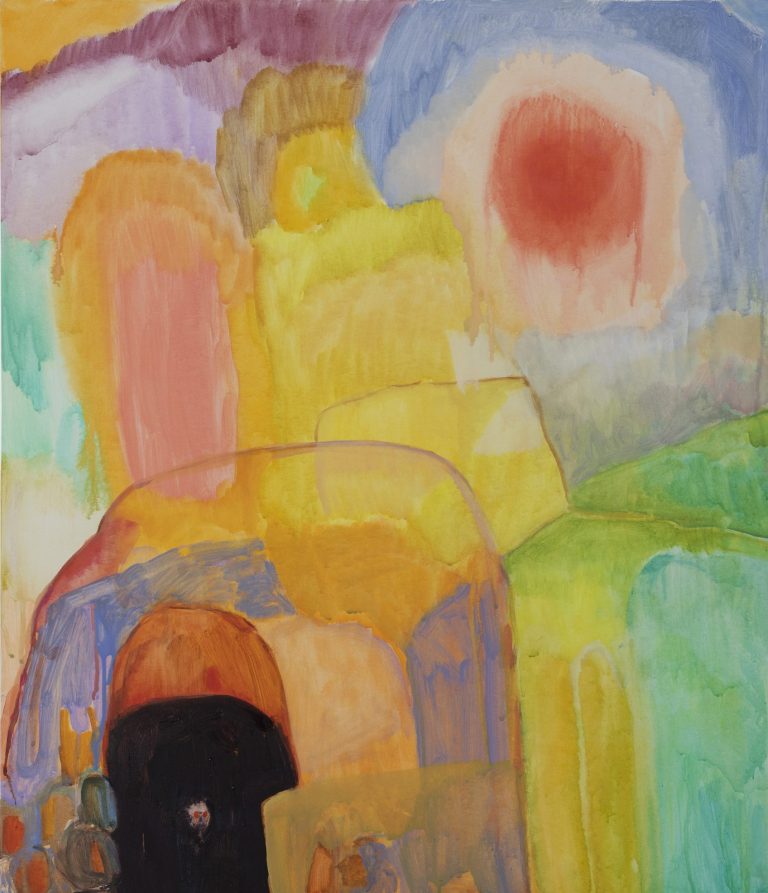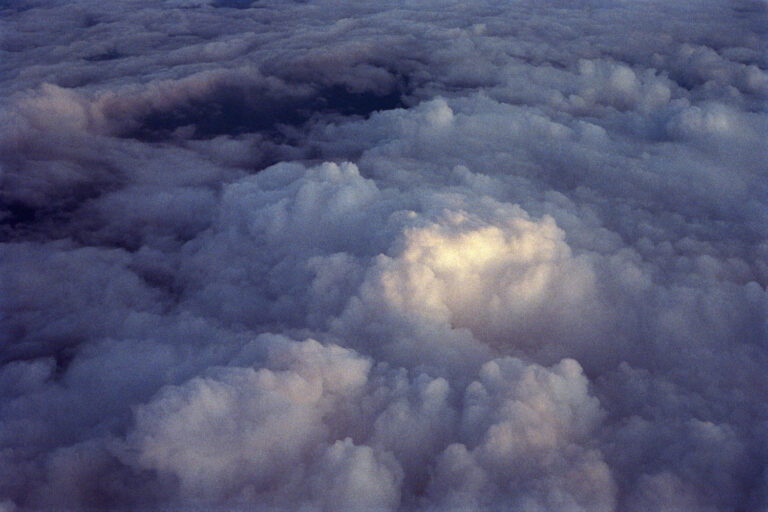The work commenced when he opened his front door and welcomed me in. I didn’t realise this right away: Garrett Phelan mentioned it a short while later, as we drove from his Kimmage home out to the Fingal coast, with his son Oliver in the back of the car.
We were on our way to visit Phelan’s THE HIDE SCULPTURE, an artwork that was conceived in 2007. Now in his early fifties, Phelan has spent a lifetime in close proximity to the art world, first as an administrator at high-profile galleries in Dublin, and then as an artist of international renown. These days, the art world holds no great interest for him. Having fulfilled many of his youthful ambitions, he has begun to think on a grander scale. The sculpture in Fingal is part of THE HIDE PROJECT – a complex, diffuse, four-pronged artwork to which Phelan has officially committed nothing less than the remainder of his lifetime.
It was an overcast midweek morning. The top-of-the-hour radio news bulletin informed us that North Korea had just test-launched its first intercontinental ballistic missile. We stopped at a service station for cups of tea. As we ate squares of chocolate and sipped our tea, Garrett told me that he’d continue to do as he was doing this morning – taking people he’d never met before out to see his sculpture – for the rest of his life, and he was confident he wouldn’t get fed up with it. I believed him. The zeal with which he spoke about all aspects of the project, from the dense bureaucratic complexities he traversed to get the sculpture built, to the labour-intensive business of erecting it, was like that of a twenty-something artist at the outset of his career.

Detail showing concrete wooden texture of THE HIDE SCULPTURE.
Photo: Shane McCarthy
© Garrett Phelan
The sculpture and the project as a whole are entirely democratic, he insisted. Anyone is free to visit the site. Phelan is less concerned with the art-critical response to THE HIDE SCULPTURE, than the ways in which everyday people engage with it: the residents of Fingal, curious Dubliners, international visitors. To him, the sculpture is an object whose meaning will outlive and outgrow that of the artist who created it – a contemporary monument dedicated to the people of the Fingal area whose significance will be reinvented each time someone encounters it, be it in Phelan’s lifetime or hundreds of years hence, when the work might be uncovered beneath crawling vegetation in the bird-ruffled stillness of the Rogerstown Estuary.
Circa 2007, Phelan was thinking hard about public-art funding and the Per Cent for Art scheme. He was dismayed by the conceptually and aesthetically mediocre art that was often produced via this system – banal sculptures adorning the sides of motorways, and so on. He himself would never accept such a commission unless he felt a deep, personal connection to the project. He began to conceive of an ambitious public artwork which would not simply bare itself to indifferent motorists or pedestrians like a roadside flasher, but which was hidden away – a hide – open to all, yet demanding a degree of determination and engagement.
The project consists also of a website; a collection of twenty-eight prints of birds found at the site, titled THE HIDE SUITE, and an internet radio station named HIDE FM. The station will broadcast for twenty-eight days, each day devoted to a single bird, its song interspersed with field-recorded ambience and Phelan’s whispered commentary, playing on a loop for twenty-four hours. The heart of the project, though, is THE HIDE SCULPTURE.
Phelan was not raised in an especially art-oriented household, but the draw towards art was always there. As a teenager he would take a bus into the city centre on Saturday afternoons, visiting galleries alone, sometimes with friends. One afternoon he went to an exhibition at the Douglas Hyde Gallery, by the painter Patrick Scott. He gazed at one of the celebrated artist’s gold-coloured works for a long time, unable to comprehend why Scott was so renowned, what secret would make this work unfurl itself for him. After an hour of simply, ardently looking, it dawned on him that the painting was composed of thumbprints. This small revelation opened something: the work blossomed. Such was Phelan’s method of self-schooling in art appreciation.
He studied art at college but had an antagonistic relationship with the institution, and little taste for the stoned, indolent life of a student. Committed to a rather narrow vision of what art and artists were, his educators told him he lacked the talent to be an artist, and he believed them. After watching too many friends fall off the edge of sanity through drugs and disquietude, Phelan dropped out. That same day he lit a joint and read through the listings in a newspaper, taking note of all the galleries in Dublin. He visited them one by one, till he was offered a job – at Hendriks Gallery. If he couldn’t be an artist, he could at least assist and observe artists. And this he did, with energy and ambition, through his early twenties. Eventually he came to take seriously these established artists’ periodic insistences that he ought to create art of his own.

View of THE HIDE SCULPTURE from the Rogerstown Estuary side.
Photo: Shane McCarthy
© Garrett Phelan
We parked in the shadow of Balleally landfill, an imposing, grass-covered mound in Lusk, north County Dublin. I followed Garrett and Oliver along a snaking gravel track through a tunnel of foliage. Garrett noted that the stones had been disturbed since he’d last been out here. Hares, he said. In folklore, hares are said to inhabit the threshold to the underworld. At the end of the track the sculpture loomed like a mythical cabin in the woods, its seclusion suggesting both quiet serenity and sinister goings-on. A dull camouflage green, the sculpture is a single-pour concrete structure whose surface has been rendered to give the impression of wood – indeed, I thought that’s what it was till I placed a hand on it. It was news to me that a ‘hide’ is the name for such a structure as this, where birdwatchers do their birdwatching.
Resting against the hide was a camouflaged bike. That too was part of the artwork, Garrett said. Everything was part of the artwork: the surrounding foliage, the looming mound of the landfill, the rustle in the trees, the landscape, these words that were passing between us, this very moment.
He unlocked the hide and we stepped inside. The sounds of birds, a low-flying plane, the background motorway, and the coastal ambience mingled in the interior darkness. Garrett pulled up three rectangular shutters, opening the view of the estuary and the woods beyond. In the pale, slanting daylight I regarded the carved imagery on the walls and ceiling: the phases of the moon, a flurry of hearts like cherry blossoms on a breeze, the words IN PERPETUITY. One wall was marked by the image of a lone bird, perched on a serpentine branch and linked by a cable to some sort of battery. An osprey, said Garrett. A sacred bird in Buddhist mythology, he added – the King of Birds. I have Buddhist friends and consider myself a kind of fellow-traveller, but I’d never heard them mention this bird, with its lovely name and dignified bearing. The ospreys come in from Scotland, Garrett said. They’re rare though. You might see one here one day of the year.
Ornithology has been an element of Phelan’s art for years. As he spoke I took pleasure in the readymade poetry of bird names, knowing as he listed them that I wouldn’t remember which forms they designated, that the period of my life when it was still possible to absorb such knowledge was past. Skylark, he said. Curlew. Godwit. Plover. Greenshank and linnet and sandpiper. Little egret. Teal. Whimbrel. Lapwing and kingfisher. Brent goose. Some of the species were endangered, he said. The lapwing, the curlew …
I peered through the telescope, over the damp coastal terrain. In the background, brightly coloured figures traversed a golf course, disappearing behind tall trees. On the estuary, white and brown birds flocked. That was what I saw: white and brown birds. Gulls and curlews, said Garret. There were scores of curlews. They didn’t look all that endangered.

Detail showing concrete wooden texture of THE HIDE SCULPTURE.
Photo: Shane McCarthy
© Garrett Phelan
We stepped outside and stood at the front of the hide. Out here, with the estuary and the far-off train-tracks and the sea just past the horizon, it was easier to think in terms of decades and centuries, to imagine human structures become overgrown and then rediscovered, their significance guessed at and their function defined anew. It was possible, for instance, to imagine the hide as a site of martial vigilance in some embattled future, a pillbox from which to scan the horizon for marauders. Garrett mentioned Robert Smithson and the Land art movement, evoking the monumentalism of their ambition. Like the Land artists, he had built the hide as a monument that would transcend anything as ephemeral as art history, the fluctuations of fashions and movements. It would outlive him, me, Oliver, all the curators and critics and gallerists. We would be skeletons in the ground and the world would have been through upheavals as yet unknown, and the hide would remain out here, regarded or not, standing its ground in chasmic time.
It rained faintly as we peered across the landscape. Garrett pointed to two other hides nestled unobtrusively amid the foliage – not sculptures or artworks, simply birdwatching shelters. Above all, he said, it was important that THE HIDE SCULPTURE was a functional work. He had lost interest in art that was not functional, a correlate to his growing indifference to the art world and art criticism. He spoke of his art’s commitment to the absolute present tense, the very nanosecond; of a Buddhistic emphasis on bringing the participants’ awareness into the right here, right now. He talked of his fondness for Neolithic monuments – cairns, dolmens – and of how he regarded them not in terms of their historical function, about which we could only speculate, but as contemporary objects, features on the terrain whose meaning is determined by us, the present beholders. He borrowed my phone and called up photographs of the ‘interruptions’ he has staged: using black industrial spray paint, he creates sprawling dark voids on the walls and ceilings of galleries and buildings, chasms both ominous and meditative, disquieting jolts of the absolute now.
He went on, breathlessly, to describe the physical process of creating THE HIDE SCULPTURE, which I barely attempted to follow. It sounded arduous – gritty labour in inclement conditions – yet it was clear that Garrett, leading the construction team, had gone about the task with the same enthusiasm he displayed in recounting it. Happy is the artist in any field who, even while wearing himself out most thoroughly, is never truly working – not in the sense in which I and all proletarians understand it. The art-aura that banishes the mundaneness even of physical labour extends to the participants and their experience. I’ve always liked art that augments reality, generates an invisible field that excludes boredom and ordinariness. You could come out here to THE HIDE SCULPTURE and hang around the site, looking through the viewing windows at the birds and the estuary, and you might after a while get a little bored but it wouldn’t matter, because the boredom would be subtly altered, rendered innocuous and mysterious even while remaining utterly itself – it would be part of the artwork.
I grew a little bored. My stomach squirmed and I wished I’d had a more substantial breakfast. Garrett pointed to the sky. A rare bird, he said, but I neglected to take note of which. Later in the week, a psychotherapist would lead a group meditation out here, tuning in to the stillness and aural richness of the site. This would be one of THE HIDE SCULPTURE’s functions: to facilitate reflection, a rupture of serenity in the anxious flux of twenty-first century life. Meanwhile, Phelan will be living on the other side of the city, raising his family, pursuing his projects, thinking about the meanings his work will embody when he and everyone he knows has vanished.
Rob Doyle is author of Here Are the Young Men and This Is the Ritual. He is the editor of The Other Irish Tradition (Dalkey Archive, 2018).
This essay was originally published in PVA 8, November 2017.



